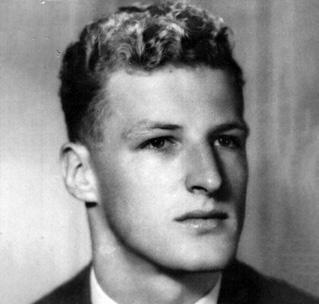
4 minute read
Obituaries
Dr Desmond Patrick Taylor FEngNZ
1941–2022
Advertisement
Emeritus Professor Desmond (Des) Taylor FEngNZ was a celebrated leader in digital wireless communications. Born in Quebec, Canada, he gained Bachelor of Science (Eng) and Master of Science (Eng) degrees from Queen’s University, Kingston, Ontario, in 1963 and 1967 respectively, and a PhD in Electrical Engineering from McMaster University, Ontario, in 1972. From July 1972 to June 1992, he was with the Communications Research Laboratory and Department of Electrical Engineering of McMaster University. He then joined the University of Canterbury as the Tait Professor of Communications. He established the Communications Research Group, which remains active today in conjunction with the Wireless Research Centre. He supervised a substantial number of students during his career, many of whom have continued in the field in both industry and academia. His impact in the field lives on in their work and through his publications. Des made substantial research contributions for more than 50 years in the field of digital wireless communications systems. His primary focus was on the development of robust, bandwidth-efficient modulation and coding techniques, and the development of iterative algorithms for joint equalisation and decoding of the fading, dispersive channels typical of mobile radio communications. He authored or co-authored more than 250 published papers and held several patents. He remained an active researcher throughout his retirement. He was a Fellow of the Institute of Electrical and Electronics Engineers, the Royal Society of New Zealand, Te Ao Rangahau and the Engineering Institute of Canada.

Ernesto Emilio Henriod FEngNZ
1936–2022
Born in Lima, Peru, Ernesto Henriod FEngNZ grew up in a remarkable time in the history of that country where, after completing his Master’s degree in Civil Engineering, he worked on the design and construction of numerous infrastructure projects across the country. After a short period in the United Kingdom in the early 1960s, back in Peru he was responsible for the construction management of an extensive highway and water supply line that traversed across the Peruvian Andes Range, bringing transport and water connection services from the Amazonian jungles to the expanding city of Lima.
In 1975, Ernesto with his Kiwi family moved to Christchurch were he quickly established himself in the construction industry, becoming Southern Manager for Fletcher Construction. In 1979, he was shoulder tapped by the World Bank and the family moved to Washington DC, where Ernesto worked for 18 years in positions ranging from procurement policy to senior management; retiring in 1998 as Director of the Bank’s Headquarters construction team.
Back in New Zealand he became an advisor to the Centre for Advanced Engineering (CAENZ) before once more “retiring” in July 2011. In this role he made important contributions, both to CAENZ and to the Asia Construction Academy of Singapore. He was also a consular representative for Peru within the South Island.
Ernesto contributed a great deal to engineering in New Zealand, particularly by championing new forms of civil engineering and building contracts, and alternative dispute resolution approaches. He authored and co-authored three books, and numerous papers and policy documents on construction and management. He was renowned and respected throughout the civil construction industry.

1975–2022
Rob Collins CMEngNZ (Eng. Technologist) began his engineering journey at the Central Institute of Technology in Upper Hutt then graduated from the University of Canterbury with a Bachelor of Engineering (Civil) (Hons) in 1998. He became a member of Te Ao Rangahau in 1998. He began his working life with two years at the Wanganui City Council before leaving for extensive travels overseas. As well as travelling, he worked as a civil engineer in the United Kingdom. On his return to New Zealand he worked for a range of engineering companies.
Rob’s involvement in engineering was varied and included assessing damage after the Christchurch and Kaikōura earthquakes. As a child, Rob had always wanted to build bridges and was able to fulfil his goal designing the overhead bridge at the top of the Wainuiomata Hill Road in Lower Hutt.
Those who knew Rob as a friend could always count on his steadfastness. He was involved in a very diverse range of both outdoor and technological interests and could turn his hand to anything. He will remain a much-loved son, brother and uncle whose family will take comfort looking at “his bridge at the top of the hill”.

Douglas Thomas Alexander Bullick FEngNZ
1921–2022
Born and raised in Dannevirke, Douglas Bullick FEngNZ studied mechanical engineering at the University of Canterbury and graduated in 1943.
From August 1942 to January 1945, Doug worked for the then Department of Scientific and Industrial Research, designing and testing components for radar installations.
In March 1945 he joined the Army and travelled to Europe. After the war, he worked for Northampton Electric Light and Power Company, then returned home in August 1948 and worked for the New Zealand Electricity Department. In 1957 he joined the Central Waikato Electric Power Board as Assistant Engineer and became Chief Engineer in January 1968. He remained there until his retirement in 1982. Doug’s specialist field was electricity distribution (both overhead and underground lines), high voltage substations, design, construction, and maintenance.
During his time with the Board in Waikato he established the central school for training electric linesmen and was on the electrical industry’s safety committee. He was very safety conscious and jointly responsible for safe working practices in the electrical supply industry.
Doug will be remembered as a fair boss. As an assessor for employers at the annual electrical workers award, he was strong, but always aware of staff welfare and safety.
He was also a Justice of the Peace and involved with a number of organisations in the community.










